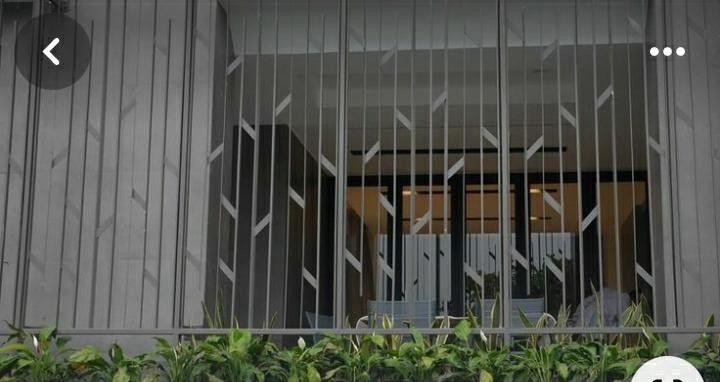The front elevation is one of the most crucial aspects of your home as it defines and enhances the overall beauty. That’s why there are numerous exterior elements available in the market for elevation design. In this discussion, we will talk specifically about an essential element for the exterior — the screen or grille panels often used in front elevations.
Choosing the Right Material for Your Elevation Screens
We’ve all seen these decorative screens and might have considered using them for our homes. However, it’s often confusing to choose the right material. There are several types available, each with its own pros, cons, and cost considerations. Let’s dive in to understand these materials better.
1. Cement (GRC) Screens
These are made from cement and are commonly available at a price range of ₹50 to ₹300 per square foot.
- Pros: Cement screens are incredibly strong, making them suitable for both front elevations and boundary walls, especially in high-traffic areas. They come in a variety of detailed, curved, and 3D designs.
- Cons: They are heavy and cannot be hung without strong support from at least three sides, preferably four. Moreover, sleek and thin designs are not achievable with cement as the material needs to be thick to maintain structural integrity.
- Best Use: Cement screens are ideal for high-traffic areas where durability is essential. If you require thick designs and can provide sufficient support, these screens work perfectly.
Note: It is essential to plan your elevation design according to the size and availability of cement screens in the local market to avoid custom mold costs, which can be significantly higher.
2. Fiber Screens
Fiber screens look similar to cement but are at least five times lighter, making them easier to install.
- Pros: Due to their lightweight nature, they can be hung with minimal support and are suitable for applications where cement screens are too heavy. Prices range from ₹400 to ₹550 per square foot.
- Cons: Fiber screens have a tendency to yellow over time, and even repainting may not provide a desirable finish. Additionally, design options are limited to what’s readily available in the market.
- Best Use: Use fiber screens for front elevations where lightweight material is required, and you are okay with keeping them in their natural color.
3. WPC (Wood-Plastic Composite) Screens
WPC is increasingly popular for furniture and is now making its way into front elevation designs. Prices vary widely from ₹300 to ₹600 per square foot.
- Pros: WPC is resistant to weather elements like sunlight and rain, making it a low-maintenance option. It can be painted, and CNC cutting allows for almost unlimited design possibilities.
- Cons: It is not as sturdy as cement or steel and is not suitable for areas subject to heavy impact or load. It mainly features flat, sleek designs rather than 3D patterns.
- Best Use: WPC screens are great for low to moderate traffic areas and where creative designs are desired.
4. MS (Mild Steel) Screens
Mild steel sheets can be CNC cut into any design, providing a wide range of options.
- Pros: MS screens are extremely strong, making them suitable for high-traffic areas. They offer unlimited design flexibility, and the material is long-lasting if maintained well.
- Cons: These sheets are prone to rust if not painted properly. Also, they are mostly suitable for 2D designs rather than 3D.
- Best Use: MS screens are ideal for commercial and residential buildings where strength and custom design are needed.
5. Terracotta Screens
Terracotta screens are gaining popularity for their unique and classy look. These screens have a thickness of about 2 inches and are priced variably depending on availability.
- Pros: The natural, earthy appearance of terracotta cannot be replicated by any other material, providing a distinct and timeless look.
- Cons: Design options are extremely limited, typically around five or six styles, and they are not suitable for high-traffic areas as they can break easily.
- Best Use: Terracotta screens work well in residential settings where a unique, traditional aesthetic is desired.
Conclusion: Each material has its own merits and limitations. The choice depends on factors like location, design preference, and budget.

